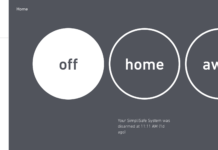
The buyers of smart home gear woke up on Monday to some pretty bad news. The first was an article detailing why How to Geek could no longer recommend the Wink hub and the second was an email from software-based smart home platform Stringify, that it would shut down.
The Wink news isn’t definitive, and details the saga of How to Geek tracking stock of Wink hubs on the Wink site and at various retail outlets. It also contains requests for information from Wink about its dwindling stock and slow update cycle. Unfortunately, nothing in this story was new for me. I’ve been fielding questions from readers for the last year or so on those very issues. And my efforts to reach Wink are similarly unfruitful.
I don’t recommend people buy a Wink hub either, and even Kevin has mellowed in his recommendation. As for Stringify, users received an email this morning noting that the app will be removed from app stores and the service will be shut down in June. All user data will be deleted. This last bit is especially nice, given that roughly 18 months ago, Comcast purchased Stringify. Theoretically, your data won’t stick with Comcast.
That being said, Comcast’s purchase of the platform signaled the end of the service at some point in the not-too-distant future. Comcast valued the team behind Stringify, which let consumers create complex flows of device interactions using a graphical user interface, but it seemed unlikely the cable giant would support the free app for non-cable subscribers for long.
And honestly, why should it? The Stringify app, while popular with smart home enthusiast, has never struck me as a good way to get mainstream consumers to adopt or embrace the smart home. It’s a niche app that even I found tough to parse. Surprisingly, a cached version of Google’s Play store data shows that the Stringify app has more than 100,000 downloads as of March 30. (The app has since been removed.) Meanwhile, the IFTTT app has more than 5 million downloads by Android device owners.
Want more IoT analysis like this? Get my newsletter.
These two items mean that the Wild West of the smart home era is coming to an end. This era was defined by consumers and companies experimenting with the potential of connected devices to build things they need, whether it was a “movie night” command or a motion sensor stuck on a medicine bottle to track someone’s daily medicine intake. I thought the smart home’s world of connectivity, sensors, and services would let people customize exactly the sort of devices and services they needed, much like software let novices create web sites.
That didn’t happen. Part of this was a lack of standards, but a large part of it was that the mainstream consumer isn’t a tinkerer who wants to figure out how to build a sensor that can tell them if their child wakes up and is wandering the house in the middle of the night. Or for people who want to create a recipe to run on their porch lights when their garage door opens after dark. These aren’t huge pain points.
What’s next is a smart home that’s more constrained —fenced in—, but also easier to implement. Amazon and Google will be the interface for most people (I suppose X1 if you’re a Comcast customer) and those companies will continue offering basic ways to create routines. Customers with wild ideas or highly specialized needs will have to roam farther and work harder to get their needs met, but the neatly packaged routines will bring the smart home to the masses.
For those who still want to tinker and avoid being fenced in, replacement services such as Yonomi, Hubitat, SmartThings and the open source projects such as OpenHAB, Home Assistant and Homebridge are all still available.
Updated: This post was updated on April 8, 2019 to add Home Assistant and Hubitat to the other options.
The post The Wild West era of the smart home is at an end appeared first on Stacey on IoT | Internet of Things news and analysis.

































